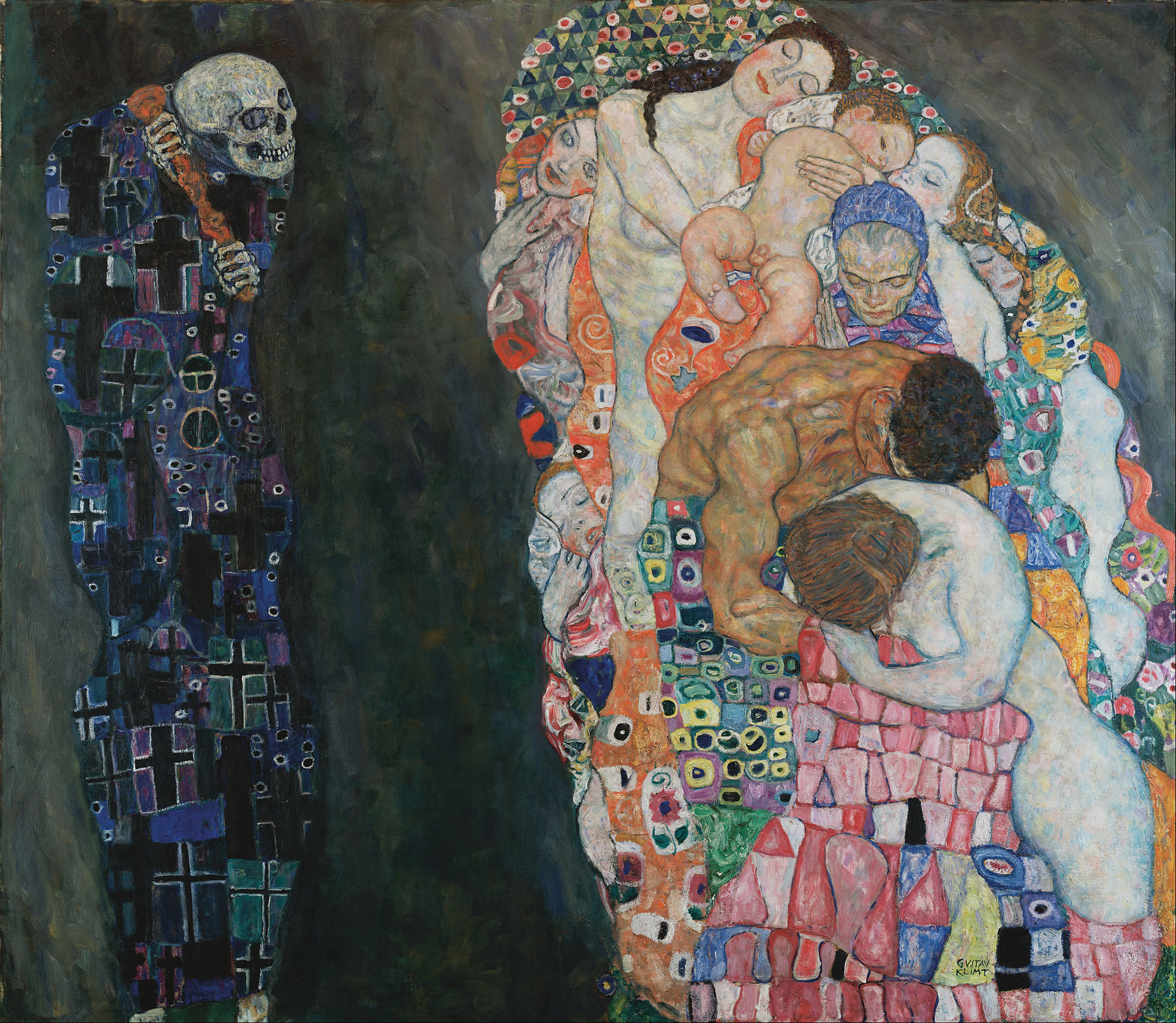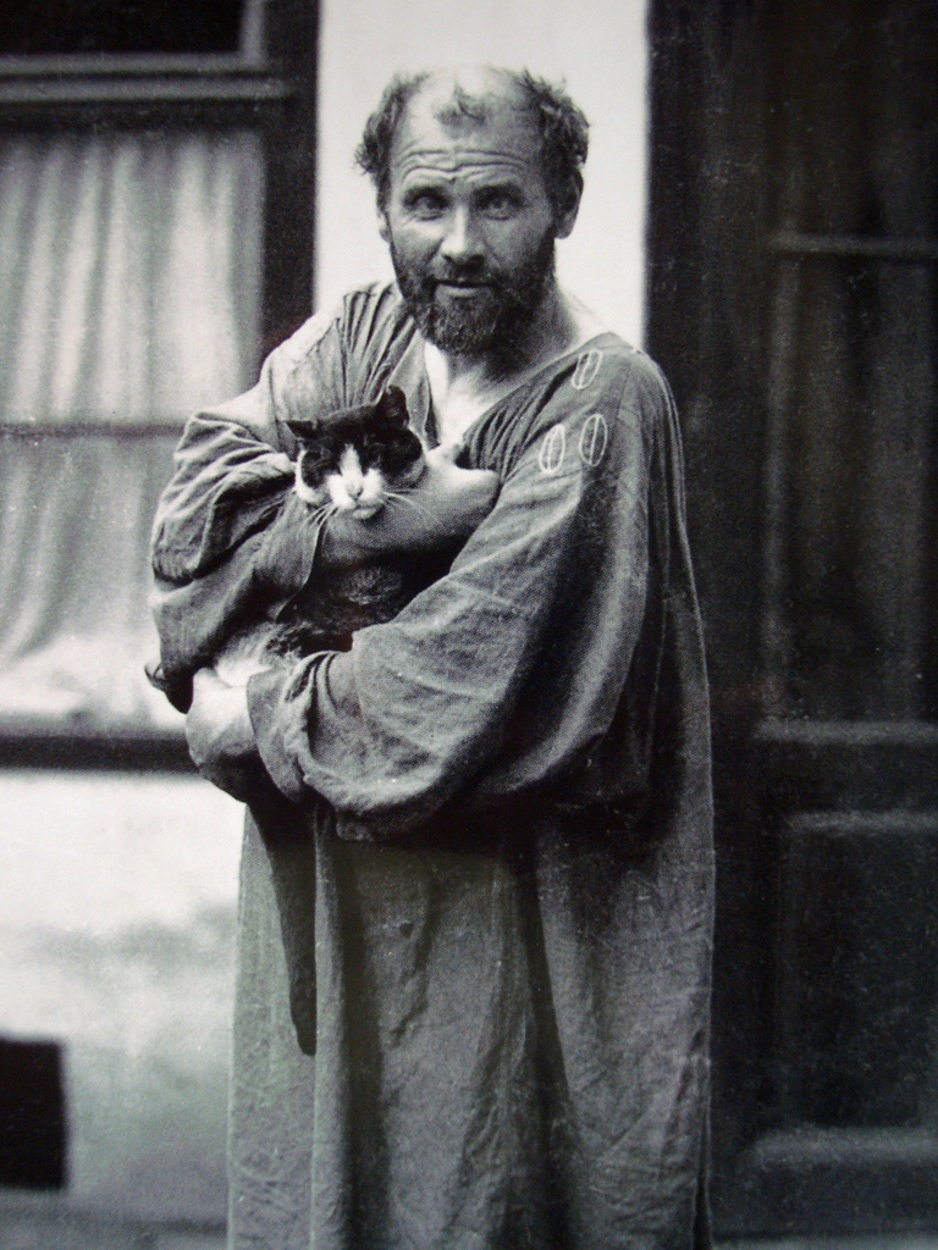On this day, in 1862 Gustav Klimt, an Austrian symbolist painter and one of the most prominent members of the Vienna Secession movement, was born. Thanks to the Leopold Museum in Vienna we can present one of his most iconic masterpieces. For the next five Sundays in DailyArt we will present pieces from their marvelous collection. Enjoy! : )
As one of Klimt’s central works, this is regarded among his greatest allegories, in which he used a bold composition to address the cycle of human life. His first sketches on paper were made as early as 1908 and were brought to oil in 1910. In its first presentation at the 1911 International Art Exhibition in Rome, Klimt received the gold medal. For unknown reasons, he decided to fundamentally revise the work in 1915. Klimt was able to depict the jarring entanglement of life and death through the formal and motivic contrast of a stream of naked human bodies (mother and child, an old woman, a loving couple) surrounded by colorful ornaments and flowers on the right, and the solitary, darkly dressed figure of Death on the left. What was supposed to have originally been a gold background appears in the final version as gray, with Death appearing almost vigorous, wrapped in a blue ornamental coat and raising a small red club, while life glows with its bright colors, figures, and ornamentation.
P.S. If you're fascinated you can read more about Death and Life here.
I know that today's is Bastille Day (Vive la France!); I'm sorry, but this year we celebrate Klimt's birthday as well. I hope you will understand. : )


 Gustav Klimt
Gustav Klimt